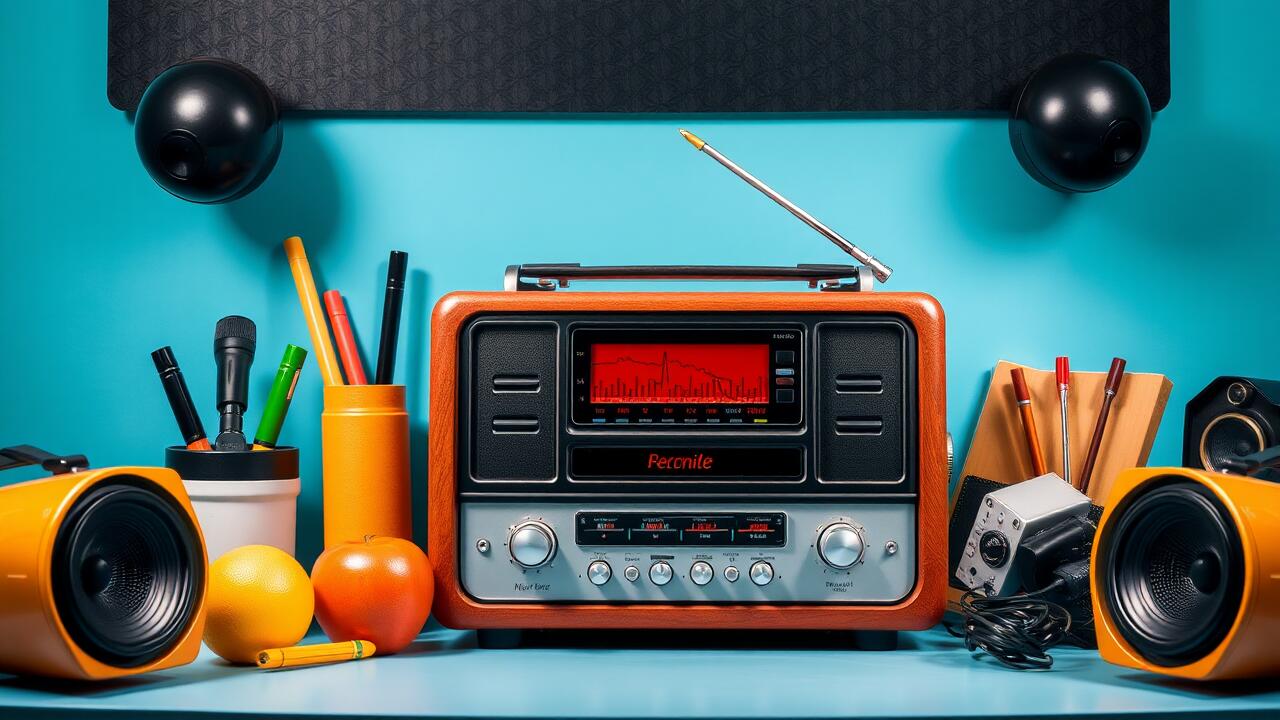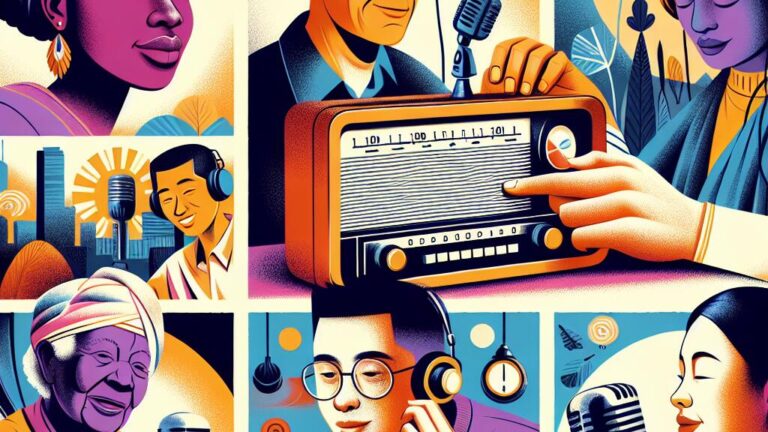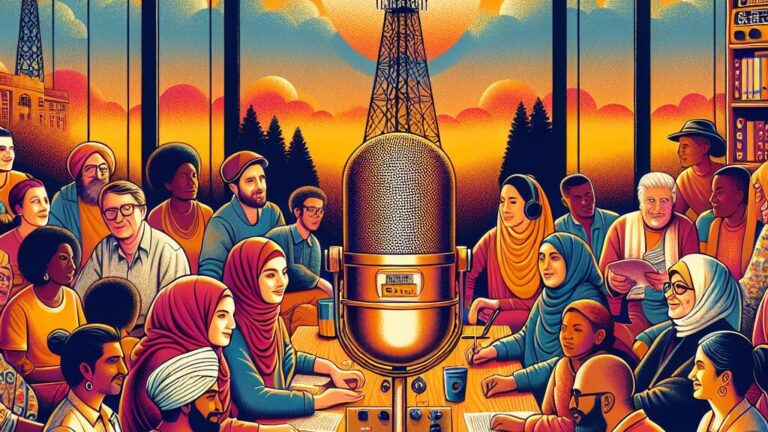Radio Stations in South Africa
Radio Programming and Content Trends
The realm of radio programming in South Africa is undergoing a remarkable metamorphosis, mirroring the eclectic tapestry of its audience’s interests. Stations are increasingly curating content that resonates with the vibrant spectrum of local cultures, trends, and lifestyles—an intricate dance between indigenous music genres steeped in the nation’s rich heritage and those irresistible international chart-toppers. Meanwhile, captivating storytelling is surging to prominence, as programs emerge to ignite curiosity and stir up reflection.
But wait! This isn’t just about traditional listening anymore; oh no! The infusion of technology has become absolutely crucial. Nowadays, many stations are weaving interactive threads into their broadcasts—listeners aren’t merely passive recipients; they’re invited to join live discussions and partake in polls that pulse with immediacy. This exhilarating shift toward dynamic content delivery doesn’t just hold onto the audience’s attention like glue—it cultivates an invigorating sense of community among listeners. With digital platforms blossoming everywhere you look, South African radio stations are deftly recalibrating their programming strategies to remain not just relevant but thriving amid an ever-shifting media landscape.
The Rise of Talk Shows and Podcasts
Talk shows have surged in popularity across South Africa’s vibrant radio scene, mirroring a worldwide craze where this format sparks lively connections between hosts and their audiences. These captivating programs dive deep into current events, societal dilemmas, and intimate personal narratives, carving out a space for an array of voices to resonate. They don’t just stop at the surface; they invite conversation—often bringing in guest experts whose insights lend credibility and weight to the discussions.
The interactive twist? Audiences can jump right in via calls or social media, cultivating a tight-knit community around the hot topics that capture public interest.
Then we have podcasts—a dynamic player in this evolving landscape! They’ve popped up as essential tools for those who crave content on their own terms. The podcasting boom complements traditional radio wonderfully, offering specialized material tailored for niche passions that might fly under mainstream radar. South African podcasters are boldly venturing into themes often overlooked by conventional media—from personal tales to intricate explorations of cultural trends—painting a richer audio tapestry that mirrors the diverse essence of South African society itself.
The Impact of Social Media on Radio
Social media has burst onto the scene as an undeniably potent instrument for radio stations across South Africa, revolutionizing their connections with audiences in ways previously unimagined. Imagine platforms like Facebook, Twitter, and Instagram morphing into vibrant arenas of real-time interaction—listeners can now engage directly with hosts, offering feedback that dances through the airwaves during broadcasts! This electrifying two-way exchange cultivates a palpable sense of community; suddenly, listeners aren’t just passive recipients but active participants who feel deeply invested in the programming.
But wait—there’s more! Social media transcends mere broadcasting; it transforms into a bustling hub for audience engagement that extends far beyond traditional frequencies. Stations are seizing these digital avenues to hype up special events, launch contests brimming with excitement, and spark discussions that invite listener participation. The breathtaking immediacy of social media empowers radio stations to pivot on a dime based on audience reactions—a whirlwind dynamic listening experience unfolds before eager ears. This fusion of social media not only magnifies the reach of radio content but also nurtures loyal listener communities eager to rally around their favorite shows.
Engaging Audiences Through Digital Platforms
In the vibrant landscape of South Africa’s radio, a digital revolution is unfurling, reshaping how stations connect with their audiences. Ah, social media! The shimmering bridge that now allows for real-time interactions—stations are no longer just voices in the ether; they’re engaging in lively dialogues with listeners, promoting shows and sharing tantalizing snippets that tickle curiosity. Feedback flows like a river as fans chime in with thoughts and suggestions, transforming passive listening into an exhilarating participatory experience. By diving headfirst into platforms like Facebook, Twitter, and Instagram, these stations aren’t merely broadcasting—they’re cultivating thriving communities around their brands.
But wait! There’s more to this tale. The rise of streaming services and mobile apps has flipped the script on content access entirely. Picture this: listeners can dive into live broadcasts or savor on-demand programming from virtually anywhere—a newfound convenience that’s hard to ignore! This digitization wave empowers stations to delve deep into listener preferences, tailoring their offerings like bespoke suits crafted just for you. Hence emerges a personalized approach to delivering content—a clever strategy designed to capture hearts (and ears) while navigating the whirlwind of an ever-evolving media terrain.
The Future of Radio Broadcasting
The radio broadcasting landscape is in a state of perpetual flux, morphing as technology leaps forward with astonishing velocity. Smart speakers and streaming services have utterly transformed how listeners tap into their audio fix. These groundbreaking innovations empower stations to connect with an eclectic array of audiences, serving up customized content that caters to personal tastes and whims. Meanwhile, the infusion of artificial intelligence and data analytics has become increasingly ubiquitous, granting broadcasters keen insights into listener habits and allowing them to craft programming that’s uniquely tailored.
As competition surges amidst the digital media explosion, radio stations are scouring uncharted territories for fresh methods of delivering content. This exploration often leads to interactive platforms where audiences can not only listen but engage directly with hosts and dive headfirst into live discussions. The bar keeps rising—enhanced audio quality coupled with multimedia elements is fast becoming par for the course as stations scramble to meet the evolving demands of their listeners. In this brave new world, honing in on creating immersive experiences will be paramount if radio hopes to maintain its foothold in a digital realm that shows no signs of slowing down.
Innovations in Technology and Content Delivery
Technological strides are revolutionizing the radio broadcasting scene in South Africa—it’s quite the spectacle! With high-definition audio streaming taking center stage and mobile applications bursting onto the scene, radio is now more accessible than ever before. Imagine this: listeners can seamlessly tune in from virtually anywhere, armed only with their smartphones or tablets. What a convenience! This newfound accessibility opens up a treasure trove of diverse programming just waiting to be discovered.
But wait, there’s more! The emergence of smart speakers has flipped the script on how audiences interact with their favorite radio content. Voice-activated commands? Check! Personalized listening experiences? Double check! It’s as if radio has been given a digital makeover that speaks directly to our modern needs.
And let’s not overlook how content delivery methods have morphed alongside these technological leaps. Live-streaming capabilities now allow stations to broadcast real-time magic, transcending geographical boundaries like never before. Meanwhile, podcasting has erupted into popularity—a perfect vehicle for repurposing traditional shows into on-demand gems that fit snugly into busy lifestyles. This evolution doesn’t just cater to shifting listener preferences; it paves new pathways for monetization through savvy sponsorships and laser-targeted advertising strategies. For those stations willing to embrace these dazzling innovations, relevance isn’t merely an aspiration—it becomes a dynamic reality that connects them with ever-evolving audience expectations in thrilling ways!
| Innovation | Description | Impact on Radio Broadcasting |
|---|---|---|
| High-Definition Audio Streaming | Improved audio quality for listeners via online platforms. | Enhances listener engagement and satisfaction. |
| Smart Speakers | Voice-activated devices for accessing radio content. | Revolutionizes user interaction and personalization. |
| Live Streaming | Real-time broadcasting of shows over the internet. | Expands audience reach beyond traditional boundaries. |
| Podcasting | On-demand versions of traditional radio shows. | Caters to busy lifestyles and offers new monetization avenues. |
Language Diversity in South African Radio
The radio landscape of South Africa is a vibrant tapestry woven from an astonishing array of languages, each thread reflecting the nation’s rich cultural legacy. With 11 official languages in play, countless radio stations spring forth, each one serving its unique linguistic community with gusto. This remarkable inclusivity opens the floodgates to a kaleidoscope of programming that resonates deeply with diverse audience segments. Stations are not shy about embracing regional dialects and indigenous tongues, striving to deliver content that feels both relatable and profoundly relevant to local listeners.
But wait—there’s more! Beyond traditional broadcasting methods, many stations are embarking on ambitious ventures into multilingual formats designed to captivate even broader audiences. This innovative strategy doesn’t just tick boxes for various language groups; it also cultivates a sense of camaraderie among listeners—a shared experience amid the sounds that define their communities. As they expand programming across multiple languages, these stations find themselves at a crossroads: loyalty from their audience hinges on their ability to adapt within this ever-shifting media landscape. By championing linguistic diversity boldly and unapologetically, South African radio stations deftly navigate the intricate dance of cultural nuances—creating compelling content that truly speaks to an extraordinarily diverse populace.
Broadcasting in Multiple Official Languages
In a nation bursting with linguistic variety, radio stations in South Africa emerge as critical players in the vibrant tapestry of official languages. Picture this: content resonates through the airwaves in Afrikaans, English, isiZulu, isiXhosa—and let’s not forget those delightful regional dialects—broadening access and welcoming all into the fold. This delightful multilingual dance doesn’t just cater to broadcasting needs; it ignites cultural exchanges and deepens understanding among diverse groups across this multifaceted land.
By weaving multiple tongues into their programming fabric, these radio stations reach out to an expansive audience while simultaneously honoring local identities. It’s a nuanced strategy that fortifies community bonds and inspires listeners to connect with stories reflecting their unique heritage. Moreover, embracing various languages aligns harmoniously with national policies designed to uplift and celebrate linguistic diversity—a cornerstone of what it means to be South African.
- Enhances accessibility to information for all communities
- Promotes cultural identity and pride among listeners
- Encourages participation in civic engagement and discussions
- Fosters collaboration among different language speakers
- Supports local artists and content creators from diverse backgrounds
- Strengthens national unity through shared narratives
- Highlights the importance of preserving endangered languages within communities
Challenges Facing South African Radio Stations
Radio stations in South Africa find themselves ensnared in a web of daunting challenges, shaking the very foundations of their traditional business model. The surge of digital media has thrown down the gauntlet, with podcasts and streaming services luring away listeners who crave that tantalizing on-demand experience. In this whirlwind of change, radio must scramble to reimagine its strategies—how can it stay relevant when audiences are seduced by more fluid formats?
Then there’s the financial quagmire—a relentless beast gnawing at the edges of sustainability for these broadcasters as preferences evolve like chameleons. Many stations cling desperately to advertising revenue, yet securing those elusive funds is becoming akin to chasing shadows; advertisers increasingly flock towards social media and digital platforms where engagement sparkles like stardust. As operational costs soar and listener numbers ebb and flow unpredictably, radio stations stand at a crossroads, endeavoring to navigate these turbulent waters while simultaneously crafting innovative programming and inventive content delivery methods that might just keep their dwindling audience from slipping away into the ether.
Navigating Competition from Digital Media
South African radio stations find themselves in the throes of a daunting battle—one fueled by the relentless rise of digital media’s powerful grip. Streaming services, social media behemoths, and the allure of on-demand content have dramatically reshaped how audiences engage with information and entertainment. Today’s listeners are spoiled for choice, gravitating toward offerings that feel uniquely tailored to their whims and easily accessible at their fingertips. In this landscape, traditional broadcasters are faced with an urgent imperative: adapt or risk fading into obscurity as they vie for the attention of both loyal fans and curious newcomers.
To stay afloat in this turbulent sea, many radio stations are diving headfirst into avant-garde content strategies while harnessing online platforms like never before. The emergence of collaborative ventures with trendy digital influencers serves as a bold bridge between classic radio vibes and the pulsating rhythm of today’s digital world. Furthermore, some stations are launching their very own podcasts—craftily designed to appeal to niche audiences—thereby broadening their reach beyond conventional airwaves. Moreover, ramping up interactivity through social media is now paramount; it allows them to connect deeply with younger demographics who crave community and kinship in their media experiences—a vital ingredient in capturing hearts (and ears) amidst fierce competition.
Conclusion
Radio remains an essential thread woven into the vibrant tapestry of South African culture, morphing with the ever-shifting terrain of media consumption. This fascinating interplay between age-old broadcasting methods and cutting-edge digital platforms has broadened the horizons for radio stations, unleashing a cornucopia of content that strikes a chord with myriad demographics scattered across this diverse land.
Peering into the crystal ball, the radio industry stands at a crossroads teeming with both hurdles and golden opportunities. The key? To wholeheartedly embrace technological advancements while keeping an unwavering focus on captivating content. By navigating these waters skillfully, radio can not only preserve its cherished relevance but also thrive in a media landscape increasingly overshadowed by fierce digital competition.







